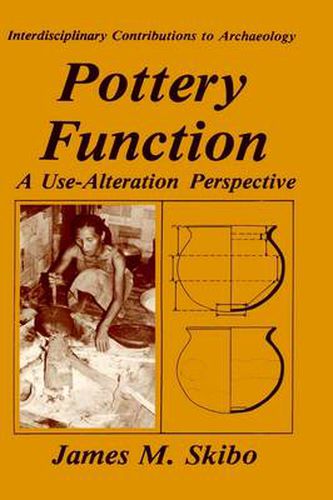Readings Newsletter
Become a Readings Member to make your shopping experience even easier.
Sign in or sign up for free!
You’re not far away from qualifying for FREE standard shipping within Australia
You’ve qualified for FREE standard shipping within Australia
The cart is loading…






This title is printed to order. This book may have been self-published. If so, we cannot guarantee the quality of the content. In the main most books will have gone through the editing process however some may not. We therefore suggest that you be aware of this before ordering this book. If in doubt check either the author or publisher’s details as we are unable to accept any returns unless they are faulty. Please contact us if you have any questions.
There are many ways to study pots or the sherds of pots. In this book James Skibo has focused on the surface wear and tear found on the resin-coated, low-fired cooking pots of the Kalinga people in north western Luzon. This detailed analysis is part of a much larger evalua tion of Kalinga pottery production and use by the staff members and students at the University of Arizona that has been underway since 1972. Here he has analyzed the variants among the possible residual clues on pots that have endured the stresses of having been used for cooking meat and vegetables or rice; standing on supports in the hearth fire; wall scrapings while distributing the food; being transported to the water source for thorough washing and scrubbing; followed by storage until needed again-a repetitive pattern of use. This well-controlled study made use of new pots provided for cooking purposes to one Kalinga household, as well as those pots carefully observed in other households– 189 pots in all. Such an ethnoarchaeological approach is not unlike follOwing the course of the firing of a kiln-load of pots in other cultures, and then purchasing the entire product of this firing for analysis. Other important aspects of this Kalinga study are the chemical analysis of extracts from the ware to deduce the nature of the food cooked in them, and the experimental study of soot deposited on cooking vessels when they are in use.
$9.00 standard shipping within Australia
FREE standard shipping within Australia for orders over $100.00
Express & International shipping calculated at checkout
This title is printed to order. This book may have been self-published. If so, we cannot guarantee the quality of the content. In the main most books will have gone through the editing process however some may not. We therefore suggest that you be aware of this before ordering this book. If in doubt check either the author or publisher’s details as we are unable to accept any returns unless they are faulty. Please contact us if you have any questions.
There are many ways to study pots or the sherds of pots. In this book James Skibo has focused on the surface wear and tear found on the resin-coated, low-fired cooking pots of the Kalinga people in north western Luzon. This detailed analysis is part of a much larger evalua tion of Kalinga pottery production and use by the staff members and students at the University of Arizona that has been underway since 1972. Here he has analyzed the variants among the possible residual clues on pots that have endured the stresses of having been used for cooking meat and vegetables or rice; standing on supports in the hearth fire; wall scrapings while distributing the food; being transported to the water source for thorough washing and scrubbing; followed by storage until needed again-a repetitive pattern of use. This well-controlled study made use of new pots provided for cooking purposes to one Kalinga household, as well as those pots carefully observed in other households– 189 pots in all. Such an ethnoarchaeological approach is not unlike follOwing the course of the firing of a kiln-load of pots in other cultures, and then purchasing the entire product of this firing for analysis. Other important aspects of this Kalinga study are the chemical analysis of extracts from the ware to deduce the nature of the food cooked in them, and the experimental study of soot deposited on cooking vessels when they are in use.